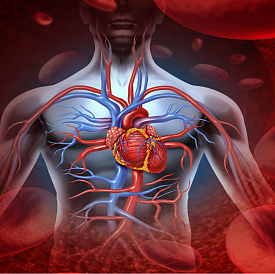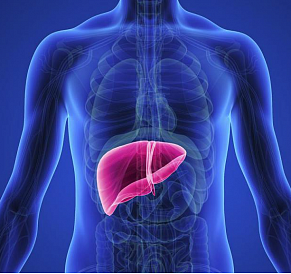10 best sweeteners
Paradoxically, but true: there are many sweet foods in nature. But at the same time, new sugar substitutes are constantly being synthesized and invented - substances many times more than natural sources of sweetness. What is it done for? First, in the search for safe products that allow you to lose body weight comfortably and without consequences. The second reason - to avoid gaining excess weight associated with improper diet. Everyone knows that the main source of fat, especially in conditions of physical inactivity, or reduced physical activity, are fast carbohydrates. Sweets and regular sugar are the leaders in the speed of transition into fatty tissue. Sugar substitutes are also needed for patients suffering from diabetes and a high risk of cardiovascular diseases. Sweet natural foods can greatly increase the appetite, it leads to overeating, and they contribute to weight gain.
Is it possible to completely abandon sugar and switch to its substitutes? Yes you can. Modern chemical and food industries produce a large number of various sugar substitutes, both natural and artificial.
On the way to the synthesis of sweeteners lie complexity. The compound must be completely harmless. It can be sweet, but poisonous. Perhaps the most famous historical example is lead sugar, or lead acetate. Known since antiquity, it was formed in lead vats in the production of vinegar obtained from sour wine in ancient Rome. When combined with metal, acetic acid formed beautiful colorless lead acetate crystals, which was called “lead sugar”.
Its use and additive in wine is associated with an unusual, and quite beautiful flavor, which he gave the wine. But he proved to be deadly poisonous, caused lead colic and led to acute and chronic poisoning. The first official sanitary document that has the highest force of law, and even more, is the papal bull of Alexander VI, dated back in 1498 about the ban on the use of lead sugar.
Also, the synthesized substitute should not affect the metabolism, have an intense sweet taste, and be well dissolved in water. As a result, out of several tens of thousands of compounds in widespread use, not so many sugar substitutes remained, and all of them have been tested by time and scientific research. This ranking includes modern sugar substitutes, which can be successfully used for various purposes.
How to classify sweet substitutes? They can be distributed by:
- degrees of sweetness, since almost all of them surpass sucrose in this indicator;
- depending on the calorie content, and it will be important for patients with diabetes.
But the easiest way to divide sweet substitutes into two groups. The first group includes the true sugar substitutes that are involved in the metabolism, and should be used with known precautions. The second group is called intense sweeteners. This name is not entirely clear.It means that almost all members of this group are much sweeter than sucrose, but they are not included in metabolism and metabolic processes, and are eliminated from the body without any consequences. Therefore, it would be more correct to call them “ballast” sweeteners. Consider the means used in culinary purposes, as well as to replace sugar in various diseases, which are in the first and second group of sweet substances.
Top sugar substitutes ranking
| Nomination | a place | Name of product | price |
| Best Metabolic, or Exchangeable, True Sweeteners | 1 | Fructose | 253 ₽ |
| 2 | Melon Sugar - Erythritol (Erythrol) | 520 ₽ | |
| 3 | Sorbitol | 228 ₽ | |
| 4 | Xylitol | 151 ₽ | |
| Top Ballast, or Intense Sweeteners | 1 | Sucralose | 320 ₽ |
| 2 | Aspartame | 93 ₽ | |
| 3 | Cyclamate | 162 ₽ | |
| 4 | Neotam | - | |
| 5 | Stevia | 350 ₽ | |
| 6 | Acesulfame K | - |
Metabolic, or exchangeable, true sweeteners
Immediately it should be emphasized that true sugar substitutes can also be dangerous in overdose and can provoke a metabolic disorder. Sometimes this is connected not so much with the fact that they take part in carbohydrate metabolism, as with psychological relaxation. People believe that sweets are safe for health, and begin to absorb them in large quantities. As a result, a metabolic “imbalance” occurs, and, as a result, a change in diet. A very important link in pathogenesis is the establishment of conditioned reflexes and the formation of connections in the central nervous system, which teach a person to have an excess of sweet.
Fructose
Rating: 4.9
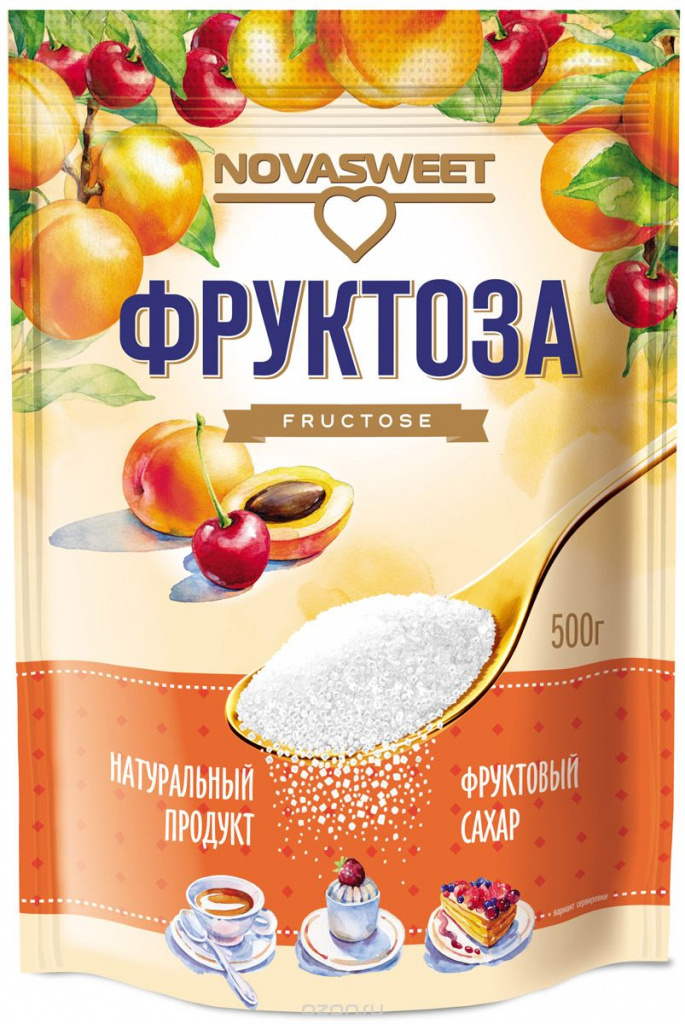
Perhaps the most famous sweetener, which can be purchased at pharmacies, is fructose. It is pleasant to the taste, and almost twice as sweet as sugar. Its caloric value is the same as that of sucrose, but since it is twice as sweet, then it is consumed twice as less. As a result, the total caloric intake becomes lower, especially considering that 80% of the total energy in the diet is carbohydrates.
Fructose is widely found in nature, in various berries, fruits and sweet vegetable crops. The glycemic index of fructose is rather advantageous compared to sugar, only 19 units versus 100 units of glucose. Recall that glucose is part of the sucrose molecule, and half the mass of sucrose is glucose. Carbohydrates with a glycemic index of less than 55 units. are “slow”, they do not saturate so quickly, and prevent excessive fat deposition. Fructose, if you add it to pastries, desserts, various jams and compotes, not only saves the amount of sugar, but also makes the taste of products more intense and pleasant. Of natural sugars, it is the sweetest product, and it is metabolized in the body when it is consumed in insignificant amounts without the participation of insulin. Apply fructose for food is recommended in an amount of not more than 35 g per day. The cost of 100 grams - about 100 rubles.
Advantages and disadvantages
In the event that fructose is “eaten” in large quantities, it can disrupt carbohydrate metabolism, reduce the sensitivity of the liver to the action of insulin, and be deposited in the form of adipose tissue. For persons with diabetes mellitus, fructose as a regular sugar substitute is not recommended, as well as for overweight people. An excess of fructose, which cannot be absorbed, turns into glucose, and this path will be dangerous. It should be added that fructose has such an effect as activation and increase in vitality, so it is recommended for people who lead an active lifestyle, athletes, and use it preferably in the morning, and if it is used in the evening - no later than hours before bedtime
Melon Sugar - Erythritol (Erythrol)
Rating: 4.8
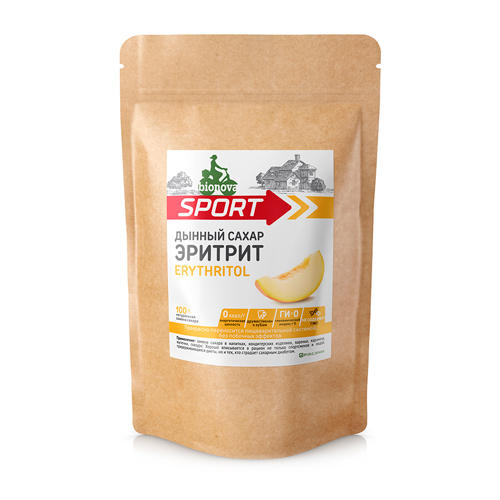
This substitute was discovered about 40 years ago, its source is natural starch-containing raw materials, most often - corn. It is called melon sugar because it is present in this crop, as well as in toy grapes.Erythritol is slightly less sweet than sucrose, and has about 5/6 of the sweetness of regular sugar. Therefore, in order to achieve equal sweetness with sugar, this substitute needs to be added a little more, and it is called the “bulk sweetener”.
But at the same time, erythritol has no energy value at all, and contains 0 calories. The reason for this zero calorie are small molecules. They are absorbed in the intestines very quickly, and, once in the blood, they are immediately excreted by the kidneys. The cost of erythritol is higher than sucrose and fructose, but not by much. One can of erythritol weighing 180 g in specialized stores for food additives costs about 300 rubles.
Advantages and disadvantages
Erythrite has a lot of advantages, and only one small drawback. Since he has no energy value at all, he is not of interest for microorganisms either. Therefore, erythritol does not cause caries, since even if it remains in the oral cavity, it is not a source of food and reproduction for saprophytes and pathogenic microorganisms. It is used in the food industry not only in our country, but also in developed countries such as the USA, Japan, Finland, and Canada. Erythritol can be successfully used for the production of confectionery products, beverages, as an ordinary sugar substitute, as well as in the cosmetic and pharmaceutical industries. In that case, if you immediately take a large amount of erythritol, it will cause a laxative effect, but this effect develops with an overdose of almost all sweeteners, both metabolic and ballast.
Sorbitol
Rating: 4.7
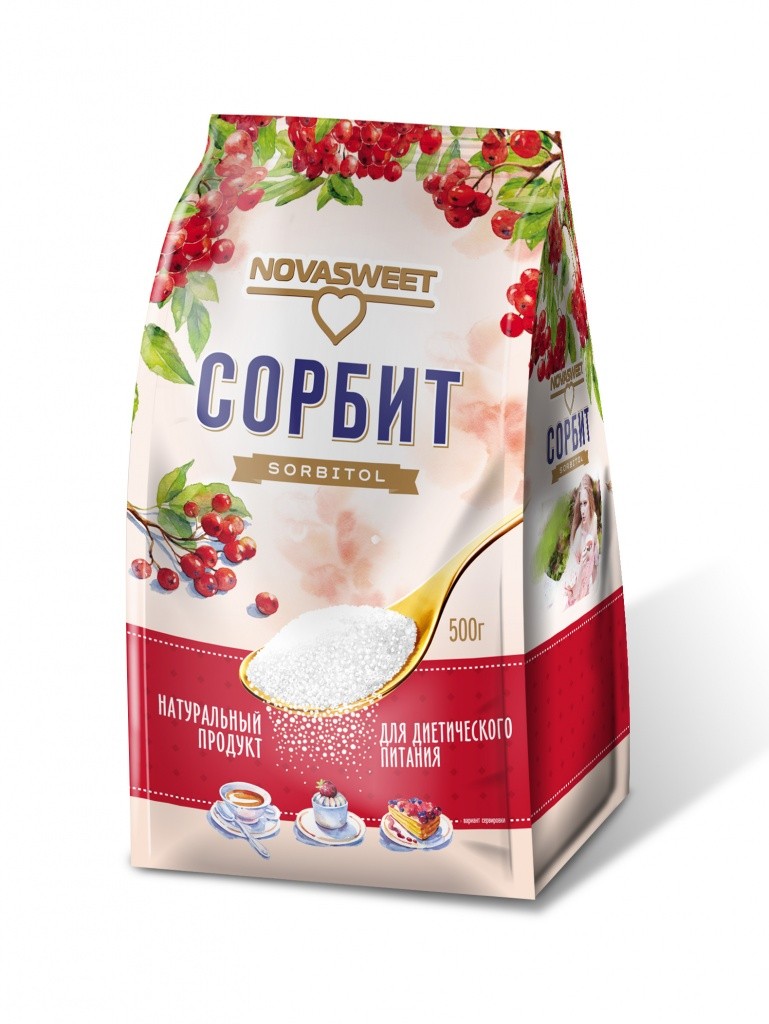
Sorbitol is a distant relative of ethyl alcohol, but instead of two carbon atoms in its molecule there are six atoms, and instead of one hydroxyl group (OH), there are also six of them. For the first time it was isolated from the fruits of mountain ash, from which it received its name. Currently, sorbitol is made from cornstarch and other similar starchy raw materials. Unlike the previous substitute, sorbitol is almost completely absorbed by the body, its caloric content is very low - only 9 units of the glycemic index. It is applied very widely both in the food industry, and in pharmaceutics, in the cosmetic industry, due to its hygroscopic properties to absorb moisture. The cost of sorbitol is low: the average price of a package weighing 500 g is 105 rubles.
Advantages and disadvantages
A plus of sorbitol will be the saving for the body of B vitamins, which, when used, are little spent. It is considered to be a choleretic substance, it is widely used in tubage (blind sensing). It has a pronounced laxative effect: if you take about 50 grams of sorbitol at once, then you should “expect” diarrhea, so it is used to combat constipation. Sorbitol is not recommended for use as a long-acting sugar substitute, since it can accumulate in the body and cause dysfunction of the retina and peripheral nerves. Although no direct toxicity has been identified in sorbitol, it is not recommended for use in diabetic patients for precisely this reason. If there is diabetic retinopathy or polyneuropathy, then over-use of sorbitol increases the symptoms of this complication of diabetes. In persons with a mild course of uncomplicated diabetes mellitus, both of the first and second type, it can be used as a sweetener, but it should not exceed the recommended amount of 30 grams per day.
Xylitol
Rating: 4.7
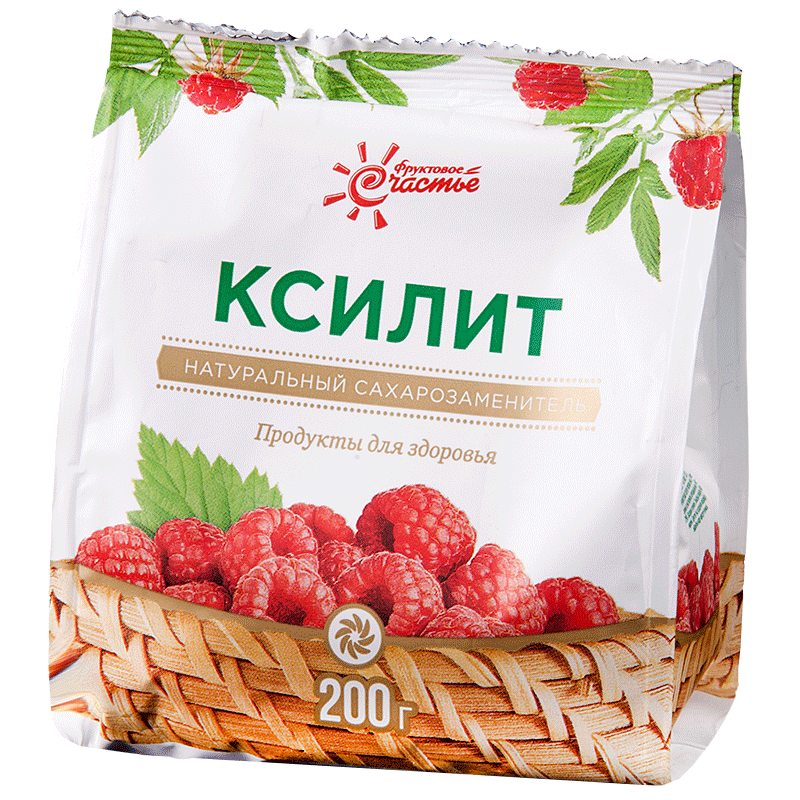
Xylitol is a relative of sorbitol, and the molecule of xylitol is shorter than the molecule of sorbitol by only one carbon atom, representing a five-atomic alcohol. It is produced in industry by chemical means, from various agricultural wastes, and even from wood. Therefore, xylitol is an inexpensive substitute, and the cost of a package of 200 grams of food xylitol costs in pharmacies, on average, 196 rubles.But if you want, you can even find it for 140 rubles. Xylitol is not as sweet as fructose, but not as high in calories. The glycemic index of xylitol is only 7 units.
Xylitol has been used as an effective sweetener for about 50 years, and its positive and negative aspects have been well studied during this time. Compared with sugar, it contains almost half as many calories, and is actively used in people with overweight and diabetes. It does not cause tooth decay, and is included in compositions for the manufacture of chewing gum. As a laxative and choleretic drug it is prescribed in dosages of 50 g or more during the day, and in the food industry it is widely used for the production of confectionery, carbonated beverages, ice cream and jam. A valuable property of xylitol will be the preservation of sweetness when heated, and it is widely used to produce various types of baking, which is shown primarily for obese people and diabetics.
Advantages and disadvantages
The advantage of xylitol is its low price, the possibility of using it for lambing, cleansing the liver, as a laxative. Xylitol is not afraid of high temperatures, and can be used for making compotes, jams and baking, but, however, it is not recommended to exceed the amount of xylitol more than 30 g per day. It can cause allergic reactions, create short bursts of insulin and sugar in the blood, as well as increase appetite and cravings for sweet foods.
With its frequent use, it can contribute to the development of dysbiosis, accumulate in the body, and contribute to the activation of seizure activity of the cerebral cortex in patients with epilepsy. It should be emphasized that it is strictly forbidden to give xylitol to dogs, because for them it is toxic and can even cause death.
Top Ballast or Intense Sweeteners
Synthetic agents belong to this group of sugar substitutes, and only stevia is an exception. But the main thing is that all representatives of this group are not metabolized in the body, and are not integrated into the processes of carbohydrate metabolism, or into other biochemical cycles. This allows you to widely apply them in various diets with reduced calorie content, for weight loss, as well as for the prevention of weight gain. Almost all members of this group are much sweeter than sugar, and this almost always allows saving on sugar. Some of these substitutes are thermostable, some are destroyed when heated. Consider which sweeteners are produced for the food and pharmaceutical industries.
Sucralose
Rating: 4.9
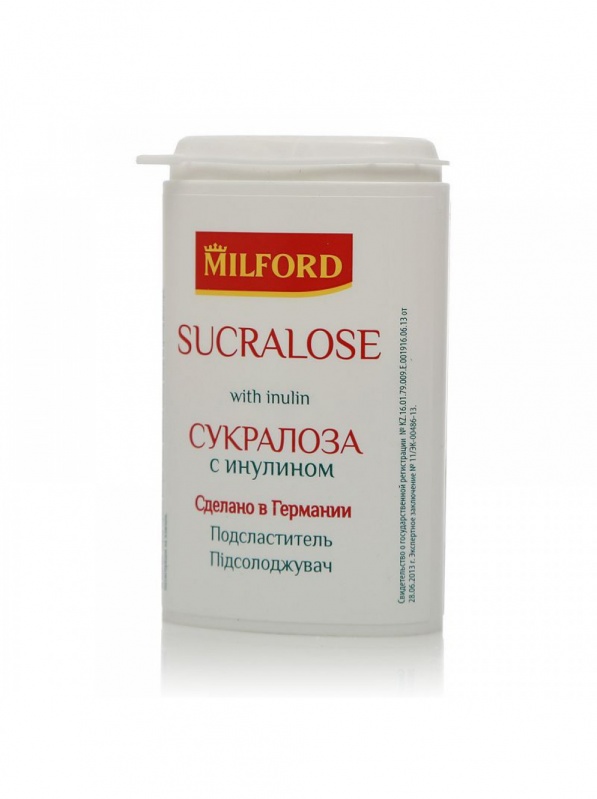
Sucralose is a relatively new, high-quality and non-degradable sweetener. It was first received about 40 years ago, and has every chance of increasing popularity. Many intense sweeteners have an unpleasant aftertaste, or aftertaste, which sucralose lacks. This substance is safe, and not only for people, but also for animals, it is used even in children and pregnant women. The vast majority of sucralose is eliminated from the body unchanged, and 15% of it is absorbed, but after a day it breaks down and also leaves the body. This substitute is 500 times sweeter than sugar, and its glycemic index is zero. Sucralose does not give the body any calories.
It is used widely in the confectionery industry, for the preparation of high-grade carbonated drinks, for sweetening fruit juices, and for the production of concentrated syrups. Since it is not a nutrient medium for the growth and reproduction of microorganisms, it is used for the production of chewing gum. The cost of sucralose is quite high. It comes in small packages, and it is still quite profitable to use it. Thus, one pack of 14 g of sucralose can replace 7.5 kg of sugar. At the same time its cost is comparable with this amount of granulated sugar.The average cost of this dosage in various stores is 320 rubles. If we take granulated sugar, then at the current price of 44 rubles per kilogram we get 330 rubles, that is, a similar amount, but the weight of sucralose is less, and it is devoid of calories.
Advantages and disadvantages
Many will find that since the “cost by sweetness” is the same, it does not make sense to look for this rather expensive substitute. But it should be remembered that sucralose is not metabolized, does not convert to fat, does not contribute to the appearance of caries, and is used in patients with various disorders of carbohydrate metabolism. It does not affect the fluctuations of blood glucose, and can be used during the diet, the purpose of which will be the normalization of body weight. The advantage of sucralose is its widespread use in developed countries, and in Canada it has been allowed for use for almost 30 years, and so far not a single case of side effect has been identified. Therefore, this tool is included in the rating of highly effective and safe sugar substitutes that do not affect the metabolism. Perhaps a shortage of sucralose may be its deficiency in the pharmacy chain, and it must be acquired in special online stores selling food additives and health products.
Aspartame
Rating: 4.8
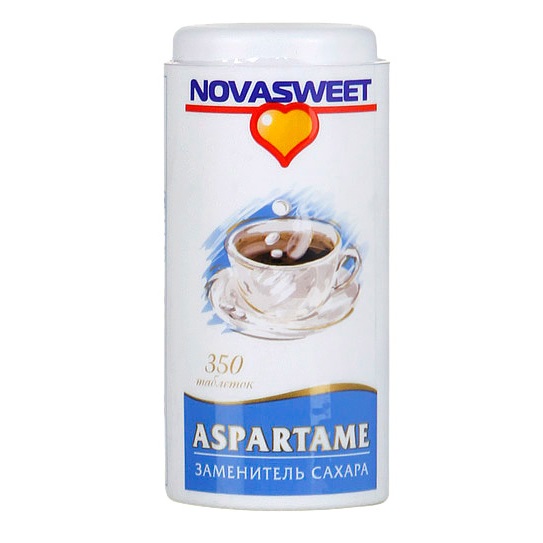
Aspartame, or food supplement E 951, in contrast to sucralose, has a barely noticeable, theoretical caloric content. If you take 1 kg of aspartate, then its energy value will be only 4 kilocalories. But if you consider that it is 200 times sweeter than sugar, then this amount of aspartate can replace two centners of regular granulated sugar. Agree, 4 kilocalories for 2 centners is quite a bit. Therefore, such a low calorie content is not taken into account. Aspartame, unlike sucrose, slowly acts on taste buds, but leaves some aftertaste longer than regular sugar. For this reason, aspartame is more pleasant to drink tea. Aspartame is synthesized from natural compounds, its source is aspartic acid and the amino acid phenylalanine.
It is the high taste qualities and the production of natural ingredients that led to the high popularity of this sweetener in the early eighties of the last century. You can buy aspartame occasionally in pharmacies, but mainly it is available for sale in online stores, in sections of sweeteners. So, aspartame can be purchased under the brand name Sladys Lux, and it will cost one pack, weighing 15 g, about 80 rubles. This package contains 250 tablets of aspartame, which are equivalent to 250 teaspoons of sugar, or two kilograms of sugar - sand.
Advantages and disadvantages
The advantage of aspartame is its low price, it can be purchased in many supermarkets and grocery stores, it has almost zero caloric value. However, this compound is considered unstable, and collapses when heated. That is why aspartame is relatively infrequently used in the food industry. At one time, it was believed that aspartame is harmful because it decomposes in the body, releasing methanol or methyl alcohol. This fact has been used to criticize aspartame, since methanol is a highly toxic poison. If you take it as a surrogate alcohol, then the most frequent complication will be complete blindness due to toxic effects on the optic nerve.
But if you make a competent calculation, it turns out that methanol in the human body from the use of ordinary food is formed in larger quantities than from the collapse of aspartame. So, if you drink 200 mg of natural juice, and compare it with a carbonated drink sweetened with aspartame, in the first case, the production of methanol will be three times more. Also, methanol in our body is synthesized from fruit pectin, in amounts far exceeding those in the processing of aspartame. Therefore, aspartame is not only affordable, but also a safe alternative to sugar.
Cyclamate
Rating: 4.7
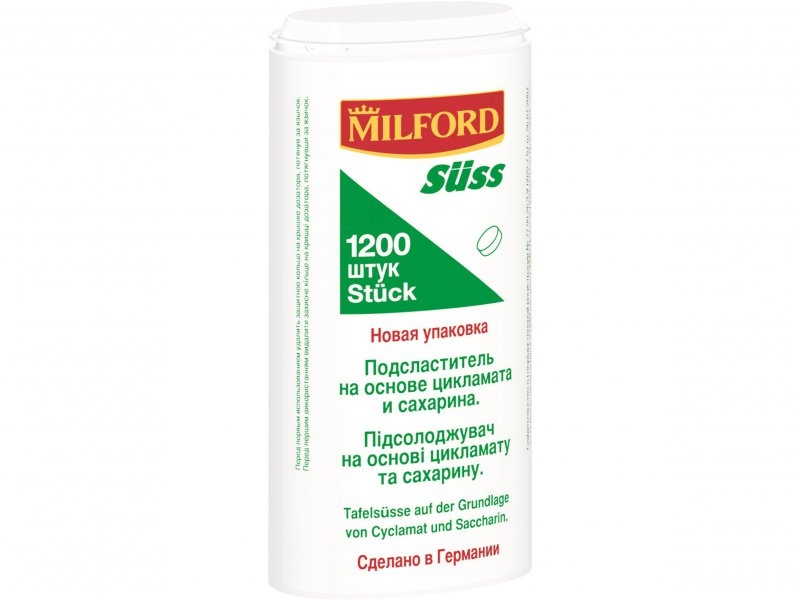
Another inexpensive synthetic sugar substitute that is not metabolized in the body is this cyclamate. It is practically not sold in pharmacies, but it is widely represented in various retail chains, and on the Internet - health food stores. He is known under the brand name Sladis Classic. Cyclamate is much sweeter than sugar, although not as much as sucralose, only about 40 times. It is not metabolized in the body, and is rapidly excreted in the urine. Cyclamate is known in EU countries, as well as in more than 40 countries, as an approved food additive under the number E 952. It also has no energy value, and can be used in diets.
The cost of one pack of cyclamate in the amount of 1200 small tablets is only 60 rubles, and each tablet replaces one teaspoon of sugar. If you take a mass of sugar in a teaspoon with a slide of 8 grams, then in the package the amount of sweetener is equivalent to almost 10 kg of sugar. At the same time, the cost of sugar will be 450 rubles, and cyclamate is almost ten times cheaper, and has no effect on the exchange, typical of ordinary sugar.
Advantages and disadvantages
Cyclamate has several advantages. It has a good sweet taste, no long aftertaste, it is quite reminiscent of the usual, traditional sugar. Cyclamate does not provoke caries, is able to quickly dissolve in hot liquids, is used by diabetics because it has no energy value and does not contain calories. This makes it possible to use cyclamate extensively for administration to pharmaceuticals. However, in this barrel of honey there is a fly in the ointment. At one time this substance was banned in the United States of America in 1969, due to some evidence of the teratogenicity of the hypothetical metabolites of this substitute, which produced bacteria in the human intestine (the drug itself is not metabolized by humans). Currently, this data is disputed, and the FDA is considering lifting this ban.
Neotam
Rating: 4.7
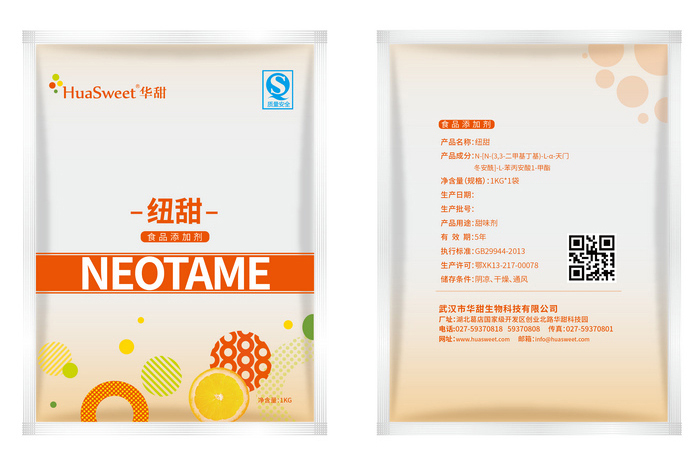
Perhaps one of the most elite, and recently launched on the market is considered to be an artificial sweetener Neotam, a product of Nutra Sweet. Its composition contains, as in aspartame, aspartic acid and phenylalanine, but in some modification, with the presence of two active groups. This allowed Neotam to be made 30 times sweeter than aspartame, and as a result, the prepared substance turned out to be 10,000 times (!) Sweeter than sucrose. At the moment it is the sweetest of all the "sweetest" sweeteners, which is produced in large volumes of industrial production. It looks like white crystals, has an absolutely pure sweet taste, without any additional flavors and aftertaste, has an even higher resistance to temperature than aspartame. In our country, it is entered in the register of food additives under the number 961, but it is very difficult to acquire it. Those who want to experience for themselves the “element of sweet life” associated with the Neotame can try their luck on the world-famous Alibaba marketplace. At the same time the cost of one kilogram starts from $ 62. Accordingly, it is possible in the first approximation to assume that you will get 10 tons of sugar for this amount, which is not bad at all.
Advantages and disadvantages
The big plus of Neotam is its extremely high, pure sweetness. This saves money, it can be used for high-temperature processing of food products, neotame is persistent, does not affect the metabolism of glucose and carbohydrates, and can be used in people with diabetes, but its use has its own specific difficulties.
A very high degree of sweetness requires adding it to the tea in literally one grain, and it is very easy to “re-sugar” a small amount of a glass or dish. Therefore, this food additive can be used in the production of large volumes of sweet products, where the risk of overdose is minimal, for example, in shops for the production of ice cream or carbonated beverages.Also, a significant disadvantage is the difficulty of acquiring this sweetener associated with access to international markets.
Stevia
Rating: 4.6
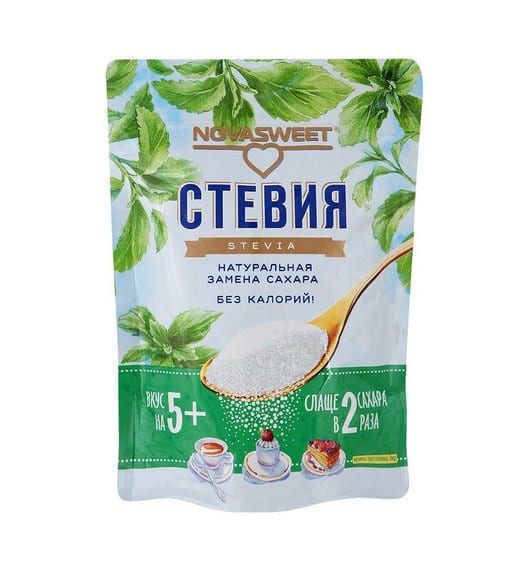
Stevia is the only sweetener named after the “original source”. This is the name of the perennial herb that grows in America, the source of the eponymous sweet preparation. In our time, stevia is positioned as an effective sugar substitute, with high taste, and therefore is considered a top-class sweetener. It is 200 times sweeter than sugar, but it has its own “face”: a rather pleasant herbal aftertaste.
For commercial purposes, it is called "honey grass extract", and it is quite possible to use stevia to feed diabetics, since its glycemic index also does not differ from zero. Unlike other substitutes of this group, which are artificially synthesized compounds, stevia is a natural product. For eating it for food purposes, there is a limitation of the permitted dosage, which is 2 mg per 1 kg of human weight per day. The stevia extract sweetener can be purchased in various forms, both in tablets and in combination with herbs. The cost is different: from 200 to 900 rubles, depending on the formulation and composition of herbs. Stevia extract is found with apples, cinnamon, and ivory, as well as in other gift combinations.
Advantages and disadvantages
The advantage of Stevia is its safety, a kind of pleasant aftertaste, the ability to combine a substitute with different tea compositions, use as a good, elite and original gift. It does not affect the level of glucose in the peripheral blood, it can be used for use by patients with diabetes and impaired glucose tolerance, is found in various stores. But it is necessary to maintain the permitted dosage and remember that the main component - stevioside - is able to lower blood pressure, therefore it should not be used in patients with hypotension, and against the background of the onset of antihypertensive therapy.
Acesulfame K
Rating: 4.6
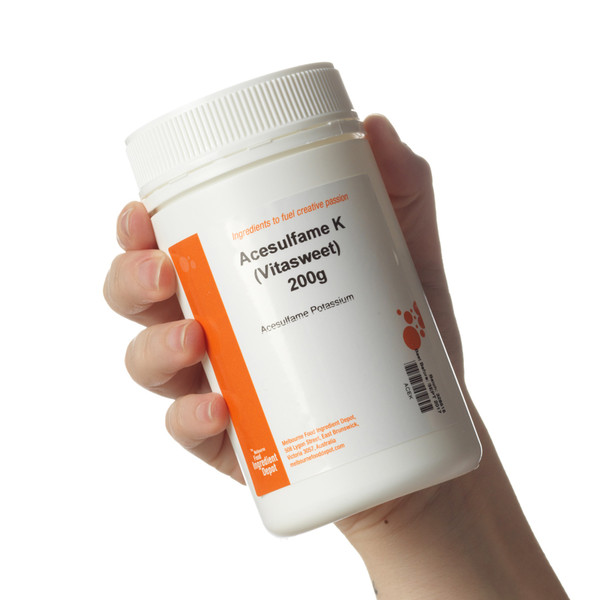
Acesulfame potassium, or acesulfame K was produced for a completely different purpose. His task was to clean the potash salt in the technological process, but then it turned out its unique sweet properties. Acesulfame is 50% sweeter than saccharin, 25% sweeter than sucralose, and more than 200 times sweeter than ordinary sugar. It can be mixed with other sweeteners, now it is familiar to many under the brand name E 950 and refers to synthetic sweeteners. It is used in baking bakery products, since it does not break down at high temperatures. Acesulfame is indicated for patients with excessive allergic background: it does not at all cause an increase in allergy symptoms. It is used in the pharmaceutical industry, the production of chewing gum, fortified juices and carbonated beverages. The wholesale price of acesulfate potassium is about 800 rubles per kilogram.
Advantages and disadvantages
This substitute is an average synthetic sweetener, without minuses, but also without "chips". It is inexpensive and does not cause side effects. Some time ago, rumors were spreading that he was capable of causing malignant neoplasms, but these were old studies from 1970, and subsequent perennial close monitoring of potassium acesulfame and toxicological examination showed the groundlessness of these allegations. This additive is approved for use in the European Union, the United States and other developed countries.
In conclusion, those who read the review of the "elements of the sweet life" in full, a small bonus. What is currently the substance will be the sweetest? This compound belongs to the esters derived from aminomalonic acid. Its sweetness is several tens of thousands of times (almost 50 thousand, five times sweeter than Neotam) exceeds sucrose, and literally 3 drops of this substance is enough to make a whole railway cistern of water, which includes 60 cubic meters, or 60 tons fluid.As a result, the water will become as sweet as an ordinary glass of tea, if 2 teaspoons of sugar are dissolved in it.
Attention! This rating is subjective, is not advertising and does not serve as a guide to the purchase. Before buying, you should consult with a specialist.



